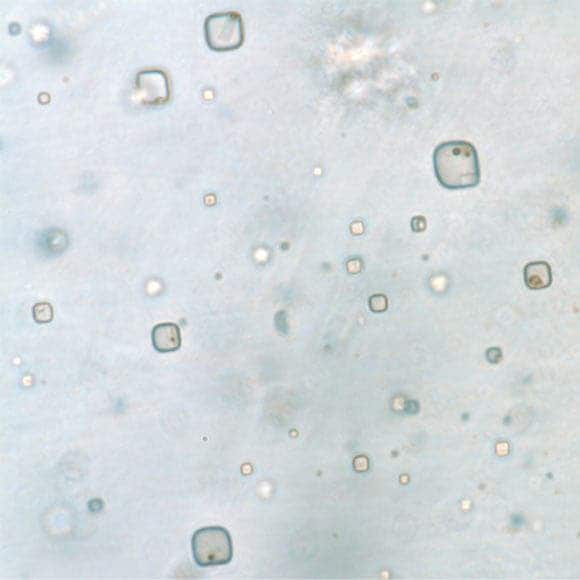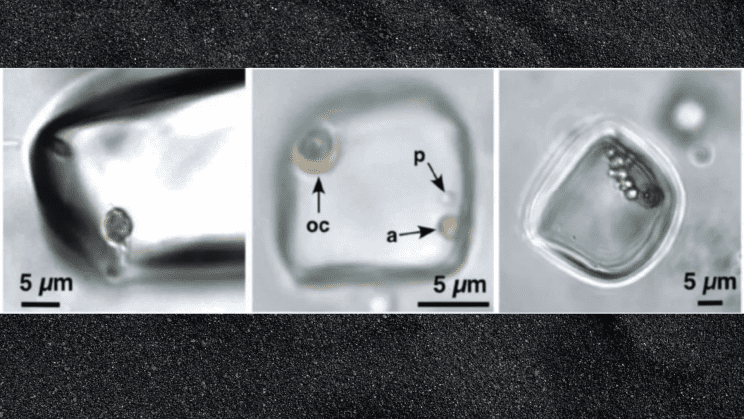
In an extraordinary find, researchers at West Virginia University were able to identify tell-tale signs of prokaryotes and eukaryotes trapped inside halite crystals that are a staggering 830 million years old. These life forms were essentially frozen in time when the salt crystals formed eons ago, and could therefore provide scientists with invaluable insights into what environmental conditions were like in ancient times.
The discovery was made after researchers used non-invasive light petrography and UV-visible light petrography on halite crystals extracted from deep below Australia’s Browne Formation. Although this area is a desert now, millions of years ago it was an ancient sea teeming with marine microbial life.
“As halite crystals grow in saline surface waters, it traps parent water in primary fluid inclusions,” said Sara Schreder-Gomes from the Department of Geology and Geography at West Virginia University.
“In addition to trapping parent waters, they can trap any solids that were in the water near/on the crystal face.”

Some of these solids trapped inside the salt were found to have properties consistent with prokaryotic and eukaryotic cells, and with organic compounds, based on their size, shape, and fluorescent response to UV-visible light.
“Several of the crystals used in this study have an exceptionally high concentration of microorganisms and suspect organic compounds within primary fluid inclusions. For these crystals, we estimated that 40% of inclusions contained suspect microorganisms,” the researchers wrote in their study.
Anything found inside the halite crystals must have been trapped at the same time the crystals formed, around 830 million years ago. But the life trapped inside isn’t just some fossils. According to the researchers, there is a possibility that the organisms inside may still be alive, surviving inside the fluid inclusion habitat, feeding on organic compounds or dead cells that provide the minute amounts of energy needed for a very-slowed metabolism.
This isn’t as wild as it may sound at a first impression. In 2009, researchers at the University of Pennsylvania found that bacterial spores trapped in a fluid inclusion in 250-million-year-old halite had amazingly survived all this time.
“The well-preserved primary fluid inclusions in Neoproterozoic Browne Formation halite are remnants of original surface waters that hosted prokaryotes, eukaryotes, and organic compounds,” the scientists said.
“These microorganisms have been trapped since the halite precipitated 830 million years ago.”
“In that time, they have not experienced significant decomposition and are able to be optically recognized in situ.”
We always knew that life tends to find a way even in the most inhospitable of conditions, but, if confirmed, these findings have set the bar a lot higher than what was previously believed possible. Immediately, they raise important implications for our search for signs of present or past life on Mars.
The authors of the new study mention that there are many sedimentary formations on Mars that are similar to the Browne Formation. As such, these formations should be considered prime real estate for future alien life reconnaissance missions.
“Fluids inside primary inclusions serve as microhabitats for trapped microorganisms, allowing exceptional preservation of organic matter over long periods of geological time. Ancient chemical sediments, both of terrestrial and extraterrestrial origin, should be considered potential hosts for ancient microorganisms and organic compounds,” the researchers wrote.
The team’s paper was published in the journal Geology.









